 Common Problem
Common Problem Apple looking into how to use HomePods, Macs and iPhones to enhance sleep monitoring
Apple looking into how to use HomePods, Macs and iPhones to enhance sleep monitoringThe future of sleep tracking could be done without any mattress sensors or wearables, as Apple is investigating using an iPhone, Mac or HomePod mini to provide physiological monitoring.
If you've ever worn your Apple Watch at night so you can wake up to its tactile alerts without disturbing others, you know it's very successful. It's not the most comfortable, though, and it also means you'll have to find time to charge the watch the next day.
Wearable sleep trackers are similar in terms of accuracy, but can be uncomfortable and interfere with the sleep they are trying to check. A newly disclosed patent suggests that Apple has been looking at alternatives, specifically ones that don't require any physical contact with a sleeping person.
There are already devices out there that you would have to be a princess to detect a tracker device smaller than the width of a pea placed on your mattress. This includes Apple's own Beddit Sleep Monitor, which it acquired when Apple acquired Beddit — and then was discontinued in January 2022.
However, "Physiological Monitoring Methods and Systems" proposes a system that does not even have this connection.
"Physiological monitoring is performed using a device that does not require the measurement of electrocardiograms, electroencephalograms, or other electrophysiological signals with uncomfortable electrodes," Apple's patent says, "but is based on comfortable motion and audio measurements ."
"The measurements required for this unobtrusive monitoring are made using systems," it continues, "such as microphones for measuring movement sounds, breathing sounds and snoring; motion sensors such as radar ..."
The same section of the patent does mention "bed-mounted force sensors, wearable motion sensors," and more. So Apple isn't ruling out body or bed sensors, but much of the proposal is about how to track sleep without any such device.
"When monitoring physiological parameters, such as the sleep of a person sleeping in a bed," Apple says, "virtually all measurements from the unobtrusive sensor relate to the sleeping person, with obvious expectations External influences, such as ambient noise, can interfere with measurements.” sleep situation for two people and believe the proposal applies here.
 "However, when the physiological parameters of two or more people are to be monitored, such as two people sleeping in the same bed, unobtrusive monitoring becomes more difficult," it continued. "In a typical measurement scenario, each person being monitored would have their own unobtrusive sensor," Apple said. "The output of each sensor will inevitably contain information about people who are not intended to be monitored using the associated sensor, e.g. a first person's motion sensor will also detect the second person's motion and vice versa." This is a difficulty, especially since, as Apple says, "the severity of the problem depends on the unobtrusive sensor used." For example, "It is easier for a microphone to pick up signals from several people." "Signal" might be a good word for "snoring," but combining audio and motion data helps differentiate between people with minimal potential for what Apple calls "crosstalk." “The amount of crosstalk between sensors,” Apple continues, “for example, how strongly the heartbeat of a person sleeping on one side of the bed appears to the sensor signal of a person sleeping on the other side depends on the sensor used Examples of types." The proposal centers on the use of multiple sensors, possibly including wearable sensors, in order to collect data that can be differentiated. It's mostly about what it calls unobtrusive devices, "which may include smartphones." Apple cites a “smartphone, tablet, TV, or desktop computer” as an example. In other words, the iPhone you charge next to your bed could be part of a sleep tracking system. If you prefer to watch TV in bed, then your HomePod or HomePod mini, MacBook Pro or even Apple TV 4K in your bedroom will work too.
"However, when the physiological parameters of two or more people are to be monitored, such as two people sleeping in the same bed, unobtrusive monitoring becomes more difficult," it continued. "In a typical measurement scenario, each person being monitored would have their own unobtrusive sensor," Apple said. "The output of each sensor will inevitably contain information about people who are not intended to be monitored using the associated sensor, e.g. a first person's motion sensor will also detect the second person's motion and vice versa." This is a difficulty, especially since, as Apple says, "the severity of the problem depends on the unobtrusive sensor used." For example, "It is easier for a microphone to pick up signals from several people." "Signal" might be a good word for "snoring," but combining audio and motion data helps differentiate between people with minimal potential for what Apple calls "crosstalk." “The amount of crosstalk between sensors,” Apple continues, “for example, how strongly the heartbeat of a person sleeping on one side of the bed appears to the sensor signal of a person sleeping on the other side depends on the sensor used Examples of types." The proposal centers on the use of multiple sensors, possibly including wearable sensors, in order to collect data that can be differentiated. It's mostly about what it calls unobtrusive devices, "which may include smartphones." Apple cites a “smartphone, tablet, TV, or desktop computer” as an example. In other words, the iPhone you charge next to your bed could be part of a sleep tracking system. If you prefer to watch TV in bed, then your HomePod or HomePod mini, MacBook Pro or even Apple TV 4K in your bedroom will work too. The above is the detailed content of Apple looking into how to use HomePods, Macs and iPhones to enhance sleep monitoring. For more information, please follow other related articles on the PHP Chinese website!
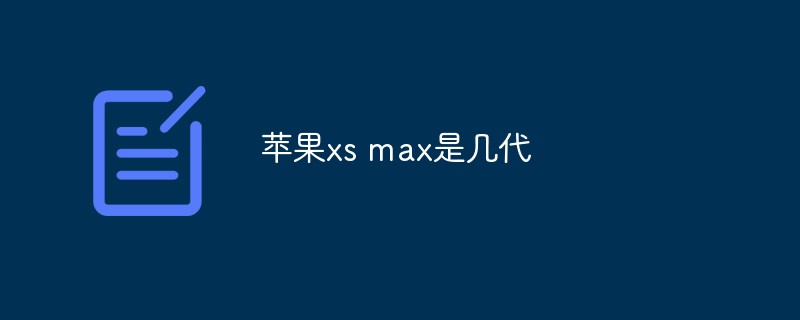 苹果xs max是几代Nov 03, 2022 pm 04:58 PM
苹果xs max是几代Nov 03, 2022 pm 04:58 PM苹果xs max是苹果第十二代。“X”是罗马数字中的10,“X”代表苹果向iPhone问世十周年的致敬;2017年9月13日,iPhone X正式发布,该产品为苹果第十一代产品;iPhone XS Max是2018年9月13日发布的,为第十二代苹果手机。
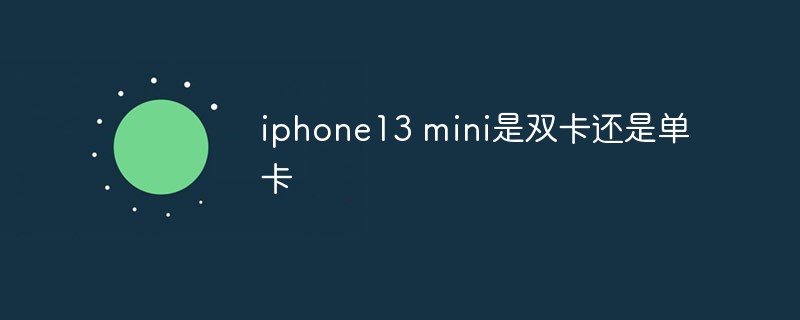 iphone13 mini是双卡还是单卡Nov 22, 2022 pm 05:27 PM
iphone13 mini是双卡还是单卡Nov 22, 2022 pm 05:27 PMiphone13 mini是单卡。iphone13 mini是苹果公司于2021年9月15日发布的一款智能手机,其SIM卡片类型为nano-SIM卡,并不兼容现有的micro-SIM卡,因此不支持双卡模式;该机为5G(sub-6 GHz)全网通手机(支持中国联通、中国移动和中国电信),支持GSM/EDGE、UMTS/HSPA+、DC-HSDPA网络。
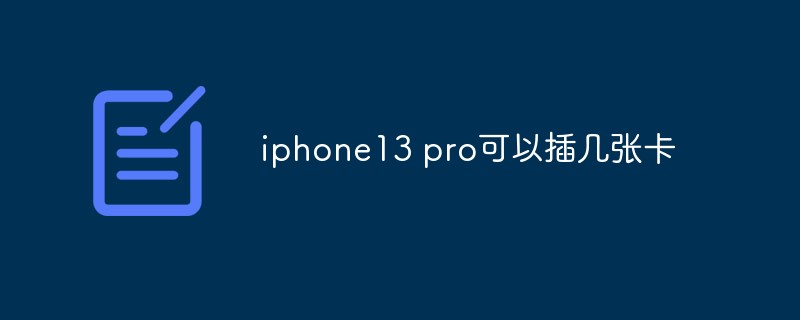 iphone13 pro可以插几张卡Nov 28, 2022 pm 05:56 PM
iphone13 pro可以插几张卡Nov 28, 2022 pm 05:56 PMiphone13 pro可以插2张卡。iPhone13 Pro是苹果公司于北京时间2021年9月15日发布的智能手机,支持双卡双待,支持双卡nano-SIM卡,但不兼容现有的micro-SIM卡;应用双卡要求运用两项移动通信服务,不支持同一时刻使用两项CDMA移动通信服务,且仅部分运营商支持双VoLTE。
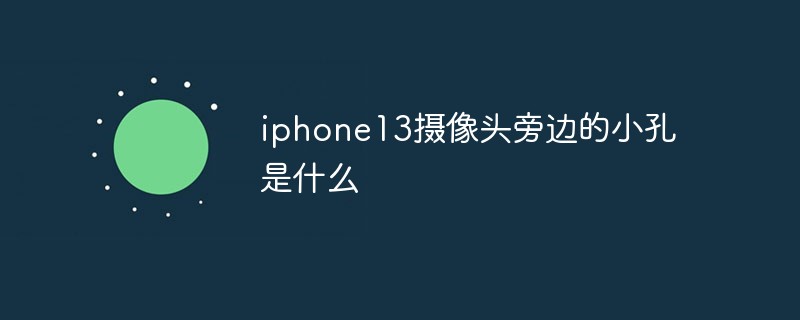 iphone13摄像头旁边的小孔是什么Nov 07, 2022 pm 02:52 PM
iphone13摄像头旁边的小孔是什么Nov 07, 2022 pm 02:52 PMiphone13摄像头旁边的小孔是麦克风,采用双唛降噪设计,是辅助副送话器收音用的,可以用来降低环境噪音和提升通话语音的清晰度的。由于在拍摄视频的时候会由于环境噪音导致被摄主体的收音效果不佳,目前大部分的智能手机都会在机身上设置有多个降噪麦克风,用来录制周围环境的噪音,结合降噪算法,实现降噪效果。
 iphone13是双卡双待吗Aug 11, 2022 pm 03:52 PM
iphone13是双卡双待吗Aug 11, 2022 pm 03:52 PMiphone13是双卡双待,iphone13系列中只有“iPhone 13 mini”不是双卡双待;苹果iPhone13支持双卡双待,双卡类型为“nano-SIM”,不支持现有的“micro-SIM”卡,需要正反两面安装SIM卡,一共可以安装两张“12mm*9mm nano-SIM”卡。
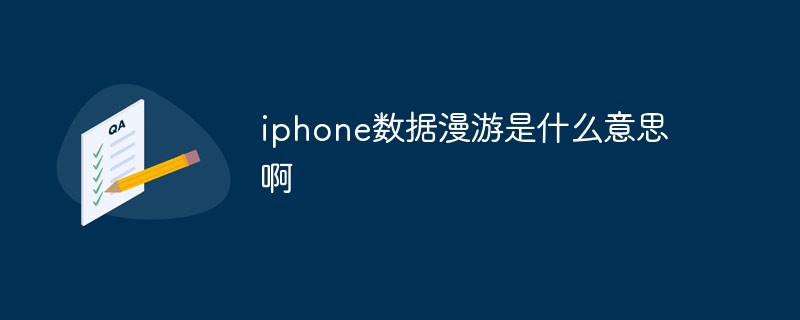 iphone数据漫游是什么意思啊Dec 02, 2022 am 10:52 AM
iphone数据漫游是什么意思啊Dec 02, 2022 am 10:52 AMiphone数据漫游是指iPhone蜂窝网络下的“数据漫游”功能,而数据漫游就是跨运营商的漫游;在国内,该功能无论是打开或者关闭,都是没有任何作用的,因为它只是针对国际上不同的移动运营商起作用。
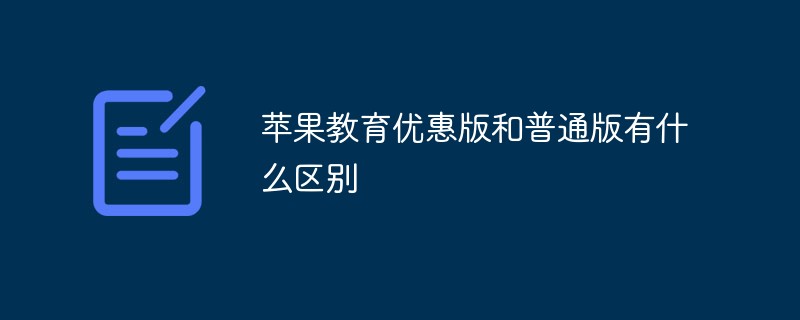 苹果教育优惠版和普通版有什么区别Oct 19, 2022 am 09:17 AM
苹果教育优惠版和普通版有什么区别Oct 19, 2022 am 09:17 AM区别:1、教育优惠比官网标价(普通版)要便宜。2、教育优惠官网下单速度会比普通版慢,普通版有货的状态一般是1-3个工作日就发货了,教育优惠版比较快的也是几天时间,如果是遇到了开学前大量学生购买的高峰期,可能要排队几个星期。3、教育优惠适用人群为准大学生、大学生、教职工(包括大中小学以及特殊教育学校的教职工群体);而普通版的适用人群比较广。
 苹果iPhone11跟iPhone13的区别是什么Oct 25, 2022 am 10:35 AM
苹果iPhone11跟iPhone13的区别是什么Oct 25, 2022 am 10:35 AM区别:1、苹果11采用A13仿生处理芯片,具有4核图形处理器和8核神经网络引擎;而13采用采用A15仿生处理芯片,具有4核图形处理器和16核神经网络引擎。2、苹果11屏幕尺寸为6.1英寸Liquid 视网膜高清显示屏;而苹果13屏幕尺寸为6.1英寸超视网膜XDR显示屏。3、苹果11的屏幕对比度为1400:1对比度,而苹果13的屏幕对比度为2000000:1对比度。

Hot AI Tools

Undresser.AI Undress
AI-powered app for creating realistic nude photos

AI Clothes Remover
Online AI tool for removing clothes from photos.

Undress AI Tool
Undress images for free

Clothoff.io
AI clothes remover

AI Hentai Generator
Generate AI Hentai for free.

Hot Article

Hot Tools

Zend Studio 13.0.1
Powerful PHP integrated development environment

SublimeText3 Chinese version
Chinese version, very easy to use

SublimeText3 Linux new version
SublimeText3 Linux latest version

Notepad++7.3.1
Easy-to-use and free code editor

Dreamweaver CS6
Visual web development tools





